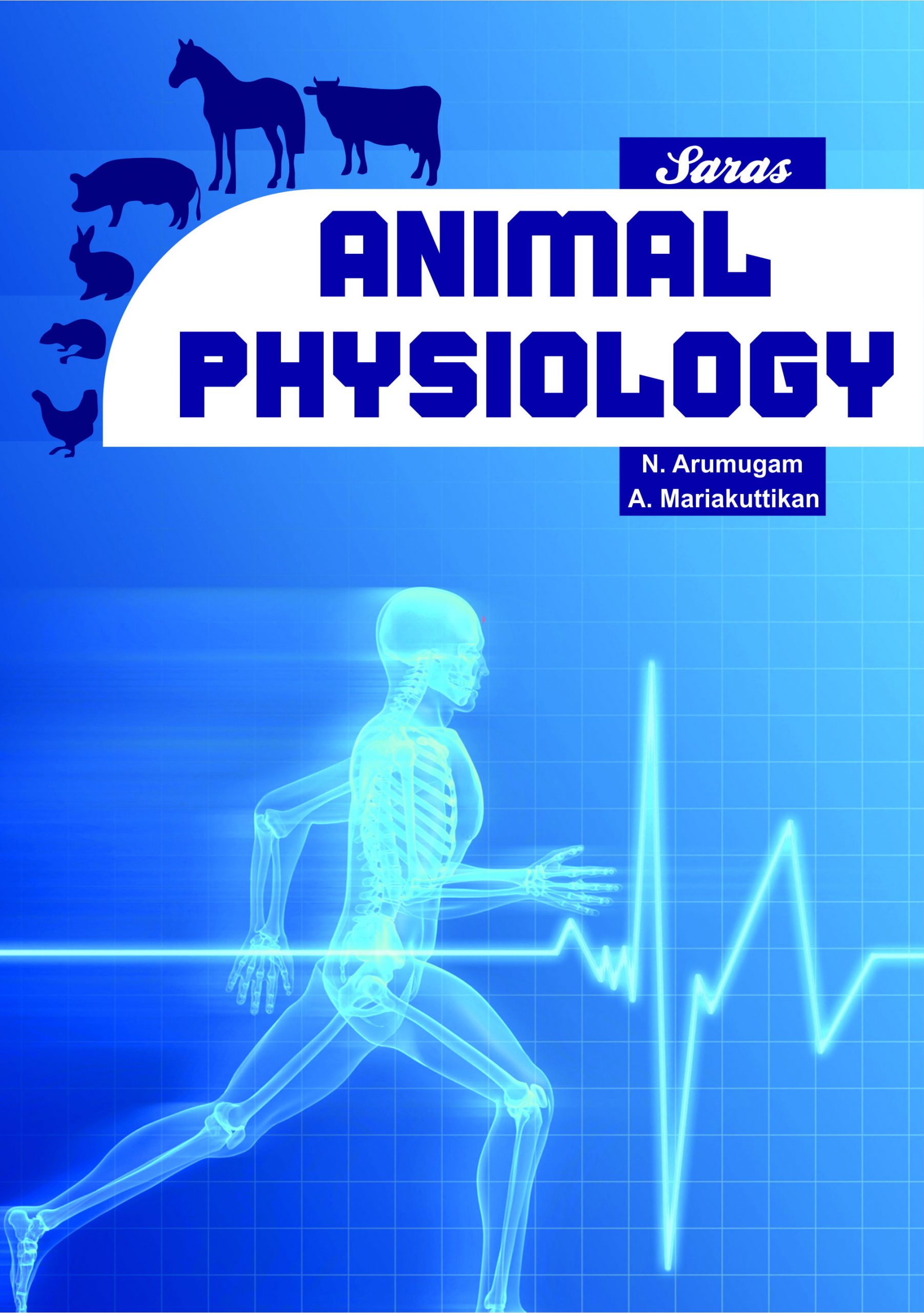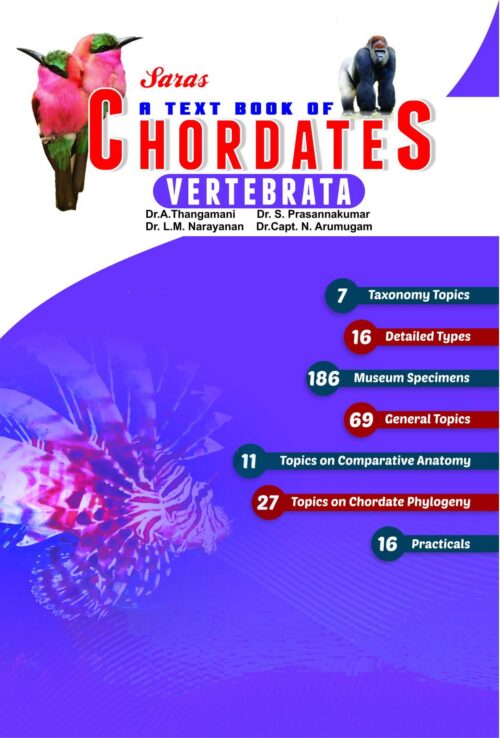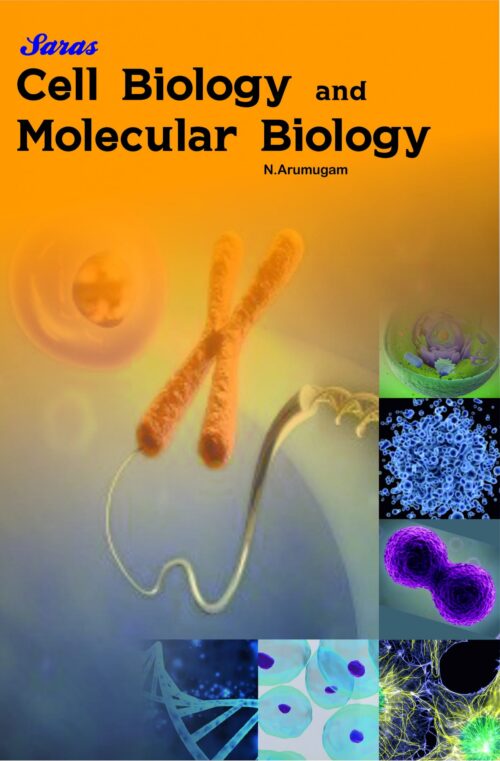Description
Content
1. Introduction
2. History of Physiology
3. Food
4. Carbohydrates
5. Proteins
6. Lipids
7. Minerals
8. Water
9. Vitamins
10. Vitamin A
11. Night Blindness
12. Xerophthalmia
13. Vitamin D
14. Rickets
15. Osteoma Lacia
16. Vitamin E
17. Vitamin K
18. Vitamin B Complex
19. Vitamin B1 (Thiamine)
20. Beriberi
21. Vitamin B2 (Riboflavin)
22. Vitamin B3 (Niacin)
23. Vitamin B5 (Pantothenic acid)
24. Pellagra
25. Vitamin B6 (Pyridoxine)
26. Vitamin B7 (Biotin)
27. Vitamin B9 (Folic Acid)
28. Vitamin B12(Cyanocobalamine)
29. Vitamin C
30. Scurvy
31. Balanced Diet
32. Energy Value of Food
33. Energy Expenditure of Man
34. Recommended Calorie Requirement
35. Protein Requirement
36. Fat requirement
37. Carbohydrate Requirement
38. Nutritional Requirements of Special Groups
39. Nutrition
40. Malnutrition
41. Kwashiorkor
42. Marasmus
43. Obesity
44.Anaemia
45. Epidemic Dropsy
46. Deficiency Diseases
47. Hygiene
48. Milk Hygiene
49. Meat Hygiene
50. Food Hygiene
51. Fish Hygiene
52. Egg Hygiene
53. Hygiene of Fruits and Vegetables
54. Personal Hygiene
55. Introduction to Enzymes
56. Enzymes Vs Catalysts
57. Enzymes Vs Whole Cells
58. Nomenclature of Enzymes (Classification)
59. Classification of Enzymes
60. Chemistry of Enzymes
61. Enzyme Catalysis
62. Enzyme Activation
63. Properties of Enzymes
64. Mechanism of Enzyme Action
65. Enzyme Kinetics
66. Enzyme Inhibition
67. Factors Affecting Enzyme activity
68. Biological Functions of Enzymes
69. Prosthetic Groups
70. Coenzymes
71. Ribozyme
72. Applied Value of Enzymes in Food Industry
73. Digestion
74. Digestive System of Man
75. Digestion in Man
76. Pancreas of Man
77. Liver of Man
78. Gall Bladder
79. Bile
80. Intestinal Juice or Succus Entericus
81. Role of Enzymes in Carbohydrate Digestion
82. Role of Enzymes in Protein Digestion
83. Role of Enzymes in Lipid Digestion
84. Absorption
85. Absorption of Carbohydrates
86. Absorption of Proteins
87. Absorption of Lipids
88. Physiology of Ruminating Stomach
89. Metabolism
90. Carbohydrate Metabolism
91. Glycogenesis
92. Glycogenolysis
93. Glycolysis
94. Krebs’ Cycle
95. Electron Transport System or Respiratory Chain
96. Oxidative Phosphorylation
97. Energetics of Glucose Metabolism
98. Pasteur Effect
99. Gluconeogenesis
100. Gluconeogenesis of Propionic Acid
101. Gluconeogenesis of Lactic Acid (Cori Cycle)
102. Gluconeogenesis of Glycerol
103. Cori Cycle or Lactic Acid Cycle
104. Uronic Acid Pathway (Metabolism of Glucuronic Acid)
105. Crabtree Effect
106. Inter-relationship of Metabolic Pathways
107. Hormonal Control of Carbohydrate Metabolism
108. Blood Sugar Level
109. Diabetes Mellitus
110. Glucose Tolerance
111. Glucosuria (Melituria)
112. Lipid Metabolism
113. Metabolism of Lipids (Neutral Fats or Triacylglycerol)
114. Oxidation of Glycerol
115. Fatty Acid Oxidation
116. Fate of the End Products of Fatty Acid Metabolism
117. Ketogenesis
118. Ketosis
119. Keto lysis
120. Biosynthesis of Fatty Acids
121. Biosynthesis of Triglycerides
122. Interrelationship of Carbohydrate Lipid and Protein Metabolism
123. Hormonal Regulation of Lipid Metabolism
124. Protein Metabolism
125. Deamination
126. Transamination
127. Decarboxylation
128. Transmethylation
129. Ornithine Cycle
130. The Krebs’ - Urea Cycle is Linked to the Krebs’- Citric Acid Cycle
131. Catabolism of the Carbon Skeleton of Amino Acids
132. Amino Acids Entering by Pyruvic Acid
133. Amino Acids Entering by a-ketoglutaric Acid
134. Amino Acids Entering by Succinyl Coenzyme A
135. Catabolism of Ketogenic Amino Acids (Leucine)
136. Catabolism of Amino Acids that are both Ketogenic and Glucogenic
137. Catabolism of Isoleucine
138. Catabolism of Phenylalanin and Tyrosine
139. Inborn Errors of Metabolism
140. Catabolism of Tryptophan
141. Catabolism of Lysine
142. Anabolic Phase of Amino Acids (Biosynthesis of Amino Acids)
143. Biosynthesis of Amino Acids from Glutamic Acid
144. Biosynthesis of Amino Acids from Serine
145. Anabolism of Proteins (Biosynthesis of Proteins)
146. Hormonal Regulation of Protein Metabolism
147. Respiration
148. Respiratory Organs in Animals
149. Respiratory Organ of Man
150. Mechanism of Respiration in Man
151. Control of Respiration
152. Respiratory Pigments
153. Transport of Gases-Oxygen Transport
154. CO2 Transport
155. Anaerobiosis
156. Respiratory Quotient
157. Biological Oxidation
158. Circulation
159. Circulatory Organs
160. Circulating Media
161. Typical Pattern of Circulation
162. Blood
163. Blood Cholesterol Level
164. Blood Urea Level
165. Blood Sugar Level
166. Haemopoiesis and Erythropoiesis
167. Blood Coagulation
168. Blood Clot
169. Anticoagulants
170. Blood Groups - ABO Blood Groups
171. Rh Blood Groups
172. Importance of Blood Group Studies
173. Human Heart
174. Coronary Circulation
175. Cardiac Output
176. Heartbeat
177. Cardiac Rhythm
178. Regulation of Heartbeat
179. Bradycardia (Slow Heart Rate)
180. Tachycardia (High Heart Rate)
181. Origin of Heartbeat
182. Conduction of Heartbeat
183. Electrocardiogram (ECG)
184. Blood Pressure
185. Heart Failure
186. Lymphatic System
187. Immunology
188. Excretion
189. Excretory Organs
190. Excretory Products
191. Origin of Excretory Products
192. Origin of Ammonia
193. Origin of Urea
194. Origin of Uric Acid
195. Classification of Animals on the Basis of Excretory Products
196. Environmental Influence on Excretion
197. Kidney of Man
198. Nephron
199. Hormonal Regulation of Kidney
200. Diuresis
201. Micturition
202. Kidney Stones
203. Dialysis
204. Nephritis
205. Urine
206. Formation of Urine
207. Hair-pin Counter Current Multiplier Theory
208. Hormones
209. Endocrine Glands
210. Pituitary Gland
211. Growth Hormone or Somatotropic Hormone (GH or STH)
212. Gigantism
213. Acromegaly
214. Dwarfism
215. Adrenocorticotropic Hormone or ACTH
216. Thyrotropin or Thyroid Stimulating Hormone or TSH
217. Follicle Stimulating Hormone or FSH
218. Luteinizing Hormone (LH) or Interstitial Cell Stimulating Hormone (ICSH)
219. Lactogenic Hormone or Prolactin or Luteotropic Hormone (LTH)
220. Melanocyte Stimulating Hormone or MSH
221. Melanocyte Stimulating Hormone or MSH
222. Oxytocin
223. Pituitary is the Master Gland - Justify
224. Thyroid Gland
225. Thyroxine
226. Triiodothyronine
227. Thyrocalcitonin
228. Cretinism
229. Myxedema (Gull’s Disease)
230. Exophthalmos (Grave’s Disease)
231. Parathyroid Gland
232. Parathormone
233. Adrenal Gland
234. Glucocorticoids
235. Mineralocorticoids
236. Addison’s Disease
237. Cushing’s Syndrome
238. Adrenaline or Epinephrine
239. Noradrenaline or Norepinephrine
240. Pancreas - Islets of Langerhans
241. Insulin
242. Diabetes
243. Diabetes Mellitus
244. Diabetes Mellitus
245. Androgen
246. Ovary as an Endocrine Gland
247. Oestrogen
248. Progesterone
249. Placenta
250. Thymus as an Endocrine Gland
251. Pineal Gland
252. Melatonin
253. Endocrine Glands in Invertebrates
254. Nervous Coordination
255. Human Brain
256. Hypothalamus
257. Autonomic Nervous System
258. Sympathetic Nervous System
259. Parasympathetic Nervous System
260. Neuron
261. Nerve Impulse
262. Conduction of Nerve Impulse
263. Conduction of Impulse through Non-myelinated Neuron
264. Conduction in Myelinated Neurons
265. Synapse
266. Conduction of Impulse Through Synapse
267. Neuromuscular Junction
268. Neuromuscular Impulse Transmission
269. Reflex Action
270. Receptors
271. Chemoreceptors
272. Photoreceptors
273. Mechanoreceptors
274. Tango receptors
275. Phono receptors
276. Rheo receptors
277. Effectors
278. Ultra Structure of Skeletal Muscle
279. Chemical Composition of Muscles
280. Properties of Skeletal Muscles
281. Tetanus
282. Fatigue
283. Muscle Contraction
284. Mechanism of Muscle Contraction
285. Theories of Muscular Contraction
286. Physico - Chemical Changes During Muscular Contraction
287. Kymograph
288. Body Fluids
289. Intracellular Fluid
290. Extracellular Fluid
291. Interstitial Fluid
292. Electrolytes
293. Homeostasis
294. Water Balance
295. Regulation of Water Balance by Hypothalamus
296. Regulation of Water Balance by Kidneys
297. Role of ADH in Body Fluid Regulation
298. Renin-Angiotensin System (RAS)
299. Electrolyte Balance
300. Body Buffer System
301. Acid Base Balance
302. Acidosis
303. Alkalosis
304. Osmoregulation
305. Mechanism of Osmoregulation
306. Classification of Animals on the Basis of Osmoregulation
307. Osmoregulation in Crustaceans
308. Osmoregulation in Chordates
309. Osmoregulation in Fishes
310. Osmoregulation in Amphibia
311. Osmoregulation in Reptiles
312. Osmoregulation in Birds
313. Osmoregulation in Mammals
314. Thermoregulation
315. Thermoregulation in Camel
316. Bioluminescence
317. Reproduction
318. Asexual Reproduction
319. Sexual Reproduction
320. Male Reproductive System
321. Female Reproductive System
322. Oestrous Cycle
323. Reproductive Cycles
324. Menstrual Cycle
325. Pregnancy
326. Parturition
327. Hormonal Control of Reproductive Cycles
328. Menopause
329. Lactation
330. Birth Control
331. Physical Barriers of Birth Control
332. Hormonal Methods of Birth Control
333. Surgical Methods of Birth Control
334. Chronobiology
335. Biological Clock
336. Behaviour
337. Aging (Senescence)
338. Practicals
339. Spotters
340. University Questions
341. Glossary
Index











abdulsadiq20 (verified owner) –
good book but some of the topics are missed but topics are very easy to learn
Saras –
please name the topics which are missing,
Thank you